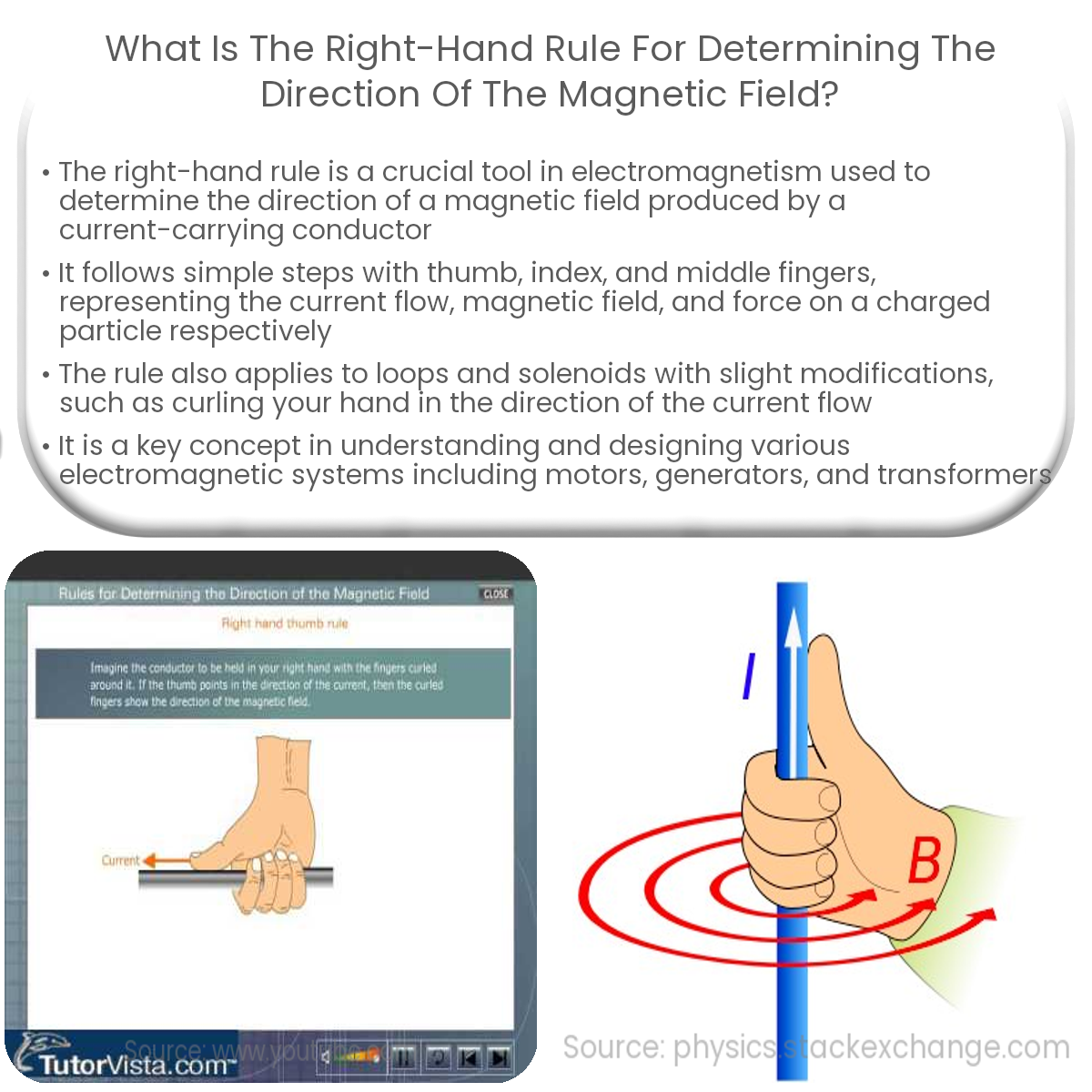The right-hand rule is a mnemonic tool for determining the direction of magnetic fields created by electric currents and the force on charged particles.
The Right-Hand Rule for Determining the Direction of the Magnetic Field
In the study of electromagnetism, it is crucial to understand how magnetic fields are created and interact with electric currents. One useful tool for visualizing the direction of a magnetic field generated by a current-carrying conductor is the right-hand rule. This rule is an essential mnemonic device for determining the orientation of magnetic fields and the direction of the induced current in various situations.
Applying the Right-Hand Rule
To use the right-hand rule, follow these simple steps:
- Stretch out your right hand with your thumb, index, and middle fingers all at right angles to one another.
- Point your thumb in the direction of the current flow (conventional current, from positive to negative).
- Your index finger will point in the direction of the magnetic field.
- Your middle finger, if necessary, will point in the direction of the force experienced by a charged particle moving through the magnetic field.
It is essential to note that the right-hand rule is based on conventional current flow, which is opposite to the actual flow of electrons (from negative to positive). The right-hand rule works for straight conductors, loops, and solenoids.
Right-Hand Rule for Loops and Solenoids
In the case of a loop or solenoid, the right-hand rule can be slightly modified:
- For a loop, curl your right hand in the direction of the current flow around the loop. Your thumb will point in the direction of the magnetic field at the center of the loop.
- For a solenoid, wrap your right hand around the solenoid with your fingers pointing in the direction of the current flow. Your thumb will indicate the direction of the magnetic field lines inside the solenoid.
Importance of the Right-Hand Rule
The right-hand rule is an essential tool for understanding the behavior of magnetic fields in various applications, such as motors, generators, transformers, and electromagnets. By providing a simple and consistent way to determine the direction of magnetic fields and forces, the right-hand rule helps students, engineers, and scientists analyze and design electromagnetic systems efficiently.



